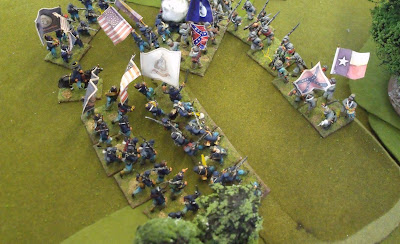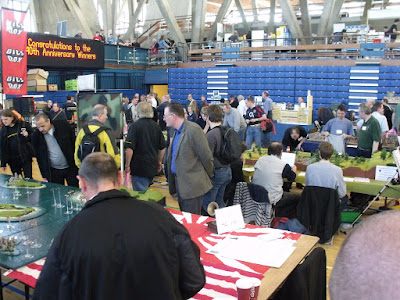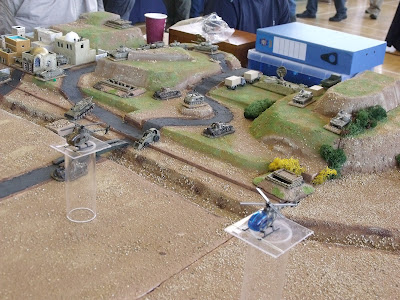"The French blasted canister at us and then their cuirassiers charged. Our battalions were formed in squares, and they surrounded us on all sides. We allowed them to come closer and then fired at 50 paces, killing and wounding many of them. We shouted Urrahhh! and charged the cavalry with bayonets. The [French] cuirassiers fled." (- an officer of Lithuanian Lifeguard Regiment)
 |
| The 1st, 2nd and 3rd Battalions |
Trying to find info about the three battalions of The Litovski (Lithuanian) Lifeguard proved to be damned difficult I can tell you. So I'll firstly explain the figures are from Essex and are part of Posties fine collection painted by myself a couple of months back.
I did find out that they were in the,
5th Infantry (Reserve) Corps, commanded by H.M. Grand Duke Constantine
Guard Infantry Division: Major General Ermolov, on 12 July 1812 appointed as Head of Staff of the 1st Western army. He was replaced by General Lieutenant Lavrov
1st Brigade: Major General Baron Rosen
Preobrazhenski Lifeguard Regiment (3)
Semyenovskyi Lifeguard Regiment (3)
2nd Brigade: Colonel Udom
Ismailov Lifeguard Regiment (3)
Lithuanian Lifeguard Infantry Regiment (3)
3rd Brigade: Colonel Bistrom III
Lifeguard Jager Regiment (3)
Finland Lifeguard Regiment (3)
Guard Artillery Equipage
2 Guard Position Batteries
2 Guard Light Batteries
2 Guard Horse Batteries
 |
| The 1st |
 |
| The 2nd |
 |
| The 3rd |
Lastly a quote from Officer Udom
“… the Lifeguard Lithuanian Regiment was sent to the Second Western Army of General of Infantry Prince Bagration near the village [of Semeyonovskoie] … On regiment's arrival to this site, the enemy made a strong attack on our battery and, upon being informed by Artillery Colonel Taube, I led the II Battalion of the regiment and drove the enemy back, which, however, was soon reinforced and compelled our entire line to retreat for 50 paces. The enemy showered us with cannonballs and canister and attacked with cavalry. My three battalions were arranged in squares awaiting cavalry and despite being surrounded by a superior enemy, they met him gallantly.
They allowed the French [cavalry] to approach to close range before delivering a battalion volley, and, yelling 'Hurrah!'; they drove the enemy, inflicting heavy losses. Our soldiers were so incensed that no prisoners were taken. We lost no wounded on that occasion. The enemy … made a second attack on the regiment, but was met with equal courage and fled to the right, while the height was occupied by the enemy skirmishers. To counter them, I dispatched … the II Battalion to drive the enemy back and capture the heights. Although this was accomplished with considerable success, the enemy was reinforced with several columns in this direction and supported the skirmishers, which made it impossible for my regiment to capture the heights. … I was wounded in the right hand by a bullet. So the regiment was left in the hands of Lt. Col. Schwartz, … [he] charged with the I Battalion to the mentioned heights and, having sent out skirmishers, he captured it. Both sides suffered heavy casualties ... The enemy, meantime, was reinforced again.
My regiment had lost too many people by now and on the order of General Vasilchikov … the regiment retreated, fighting back, to the woods, where it dispatched skirmishers for cover and then joined a battalion of the Lifeguard Izmailovsk Regiment. … In this battle, the regiment had 143 NCOs, 53 musicians, 1,543 privates, 1 non-combatant. The regiment lost up to 400 killed and about 443 wounded, with 130 missing in action. “
Udom to Lavrov, 31 August -12 Sept 1812 Borodino

















































































